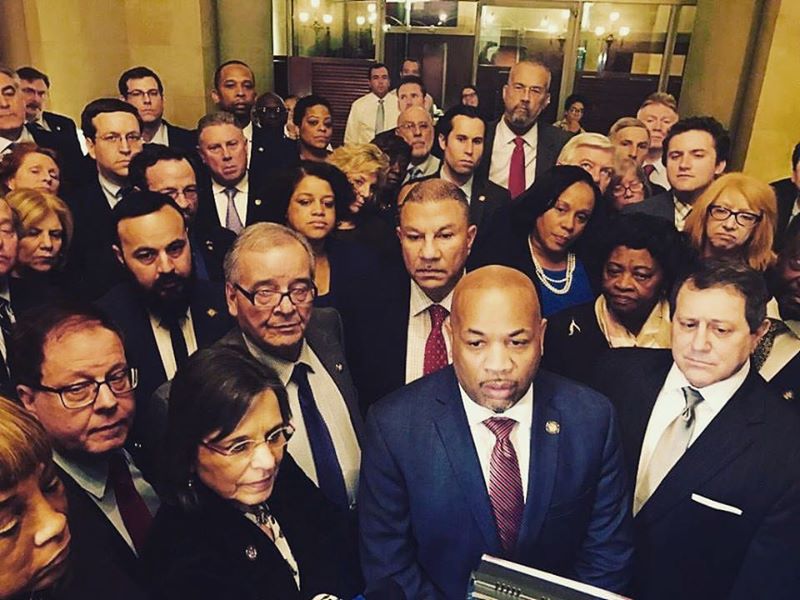Forget Upstate Legislators — Why Don’t NYC Democrats in Albany Advocate for Better Transit?
New York City's own contingent in the state legislature is the bigger stumbling block to good subway and bus service.

The Times came out with a piece today about the politics of MTA funding in Albany, and the strange dynamics at play when a city transit system is beholden to the state legislature. Why are state legislators who live hundreds of miles from New York and never ride our transit system vested with such power over NYC subways and buses?
A fair point, as far as it goes. But suburban and upstate legislators are pretty far down the list of obstructions to better NYC transit. A more consequential question about Albany’s stance toward the MTA is this: Why do state legislators who live in New York City and represent millions of transit riders do so little to improve the subways and buses their constituents rely on?
New York City Democrats control the State Assembly and could use their oversight power in that chamber to investigate the big challenges facing New York City transit. Why is subway and bus service deteriorating, and what should the MTA do to turn it around? Why does the MTA spend so much more money on capital improvements, per mile, than transit agencies in other large global cities? How has the agency’s growing debt burden constrained its ability to operate subways and buses?
These are important questions that Carl Heastie, Jeff Dinowitz, and the rest of the NYC delegation to the Assembly should be trying to answer while we all wait for Governor Cuomo and his MTA appointees to release some semblance of a transit improvement plan. Shedding light on the causes of MTA dysfunction would do transit riders more good than touring decrepit subway stations or proposing a millionaires tax.
Frankly it’s baffling that the Times limited its inquiries about legislators’ subway habits to the 37 state senators who represent districts outside New York City, when recent history shows that New York City’s own contingent in Albany is the biggest stumbling block to major reforms of transit and traffic policy.
In 2008, it was New York City Democrats in the Assembly who killed congestion pricing, and in 2009, it was a band of four New York City Democrats in the State Senate who stopped Richard Ravitch’s bridge toll plan.
A survey of the travel habits of New York City’s elected representatives would be far more revealing. When it comes to transportation, the city’s political class might as well live in a different universe than the transit-riding, mostly car-free constituents who elect them.
With few exceptions, state legislators drive everywhere, with an assist from city-issued placards that alleviate the pesky hassle of searching for legal parking spaces. They view transit enhancements like bus lanes, which benefit the vast majority of their constituents, as impingements on their personal driving habits.
As long as city representatives are at best listless and at worst antagonistic toward policies that will improve subways and buses, upstate legislators are the least of New York City transit riders’ concerns.





